In photos: Egypt's oldest mummy wrappings
A New Date for Mummy Making

A new examination of prehistoric Egyptian textiles suggests mummy making started in the region 1,500 years earlier than previously believed. Shown here is flax yarn from a burial wrapping, heavily saturated with tree resin, found at Egypt's Mostagedda cemetery, now kept at the Bolton Museum in Britain.
Read more: Oldest evidence for Egyptian mummy making discovered
Mostagedda Grave

English archaeologist and Egyptologist Guy Brunton is credited with discovering the late Neolithic Badarian culture, which flourished in Upper Egypt between 4400 B.C. and 4000 B.C., long before the pyramids were built and the pharaohs came into power. Shown here is a Badarian grave at the Mostagedda cemetery, excavated by Brunton.
Badarian Burial

The Badarian people were very attentive to the bodies of the dead. This image from Brunton's excavations in the 1920s shows a Mostagedda grave.
Bodies in Sand
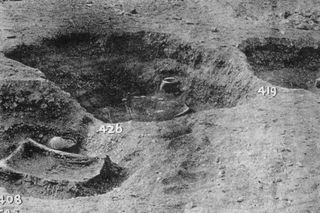
Archaeologists have traditionally believed that bodies found from Egypt's Late Neolithic and Predynastic periods, between c. 4500 and 3100 B.C., were preserved because they were buried in hot, dry desert sand.
Embalming Evidence

A team of scientists analyzed dozens of samples of funerary linens that had been peeled off of Egyptian corpses during Brunton's excavations nearly 100 years ago. They found traces of embalming agents.
Recipe for the Dead
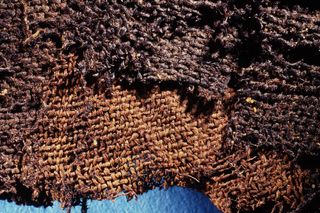
The embalming "recipe" was quite consistent across most samples, the researchers found. It was made up of mostly animal fats and oils, mixed with pine resin, aromatic plant extract, a sugar or plant gum, and a natural petroleum. The inner layer of this textile, from an early predynastic Mostagedda grave, is impregnated with embalming substances.
Sign up for the Live Science daily newsletter now
Get the world’s most fascinating discoveries delivered straight to your inbox.
Resins

This chunk of mummy wrappings was soaked with resins. Pine resins would have been imported from modern-day Turkey, suggesting prehistoric Egyptians had wide trade networks.
Flax
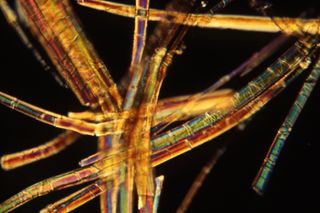
At 150x magnification, this is what flax linen from the early predynastic period looks like.
Under the Microscope

Resinous material is visible on these ancient fibers after one week in solvent. This image was taken at 125x magnification.
Clean Corpses
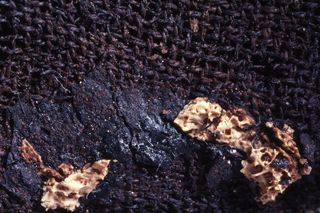
Resins also have some antibacterial properties, which would have kept microbes at bay.
Mummy Wrapping
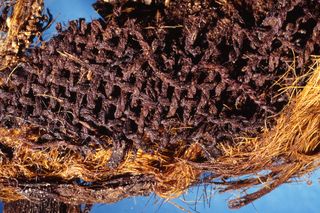
This Mostagedda funerary textile has an outer wrapping of animal skin.
Most Popular



